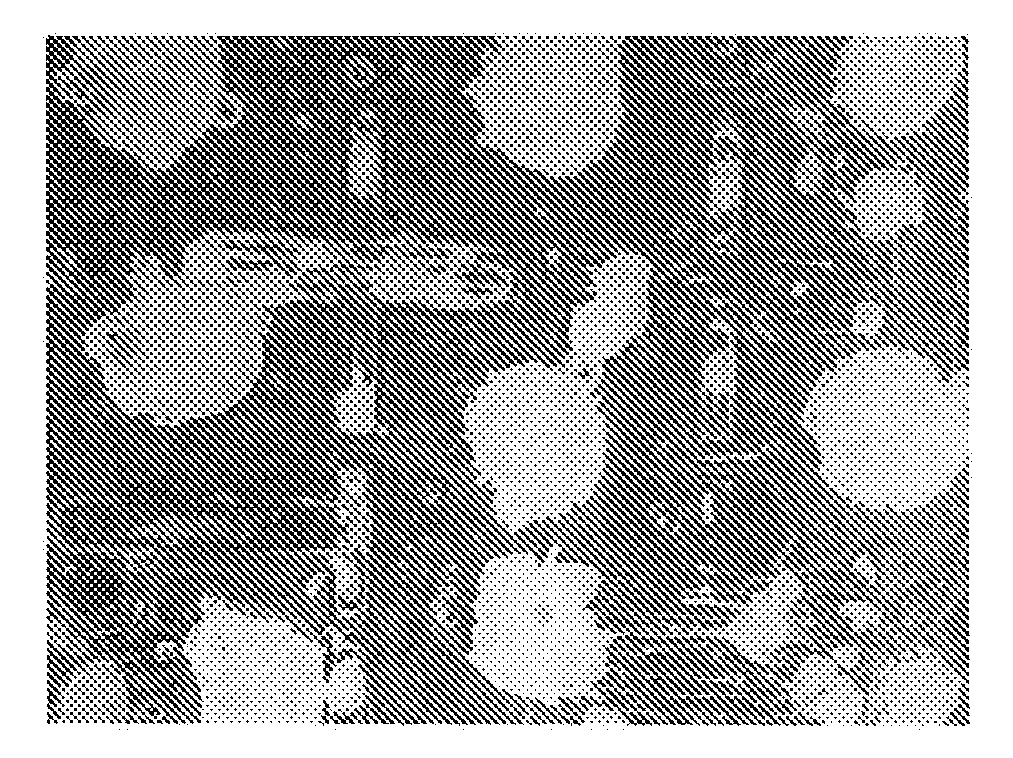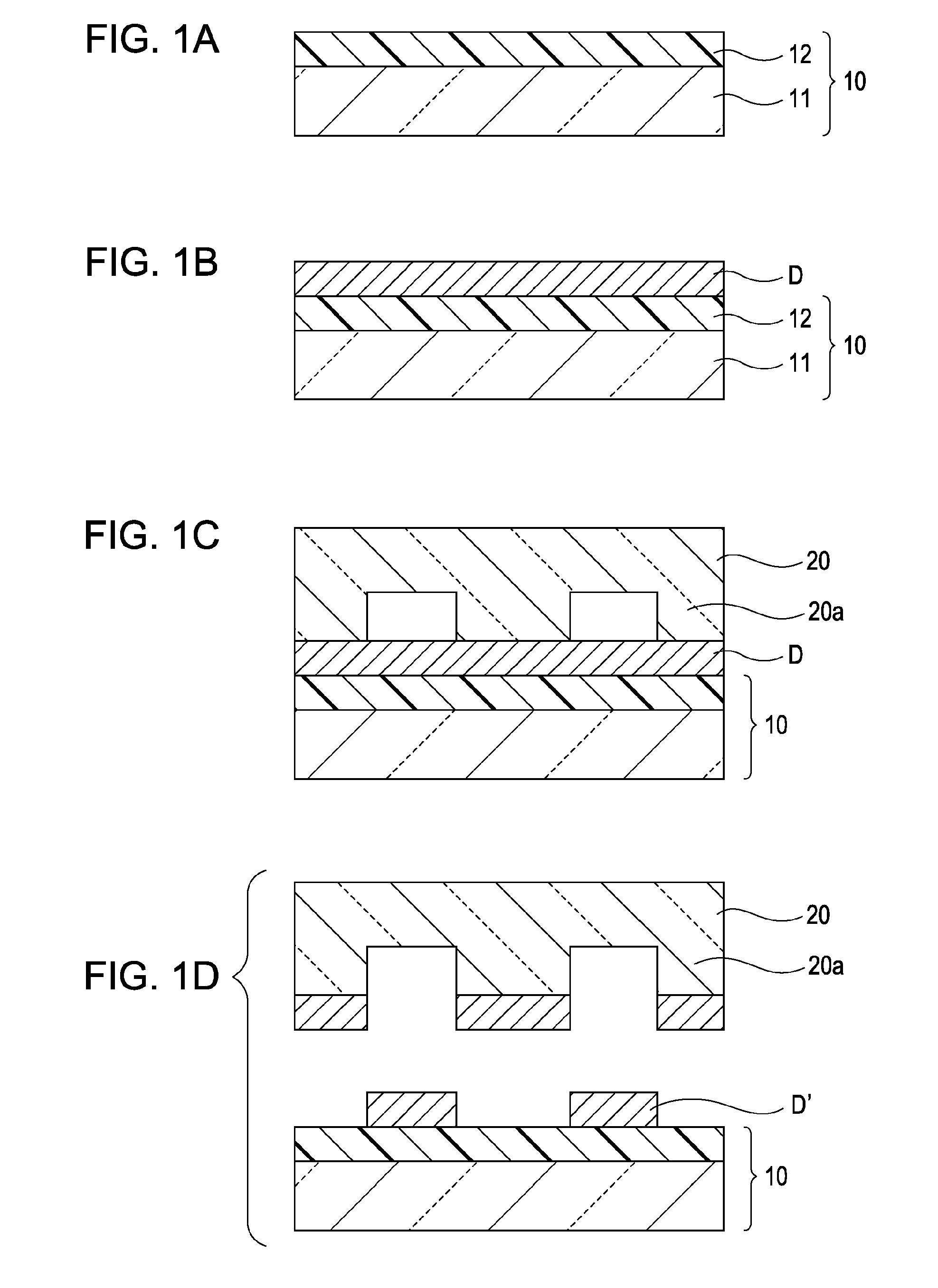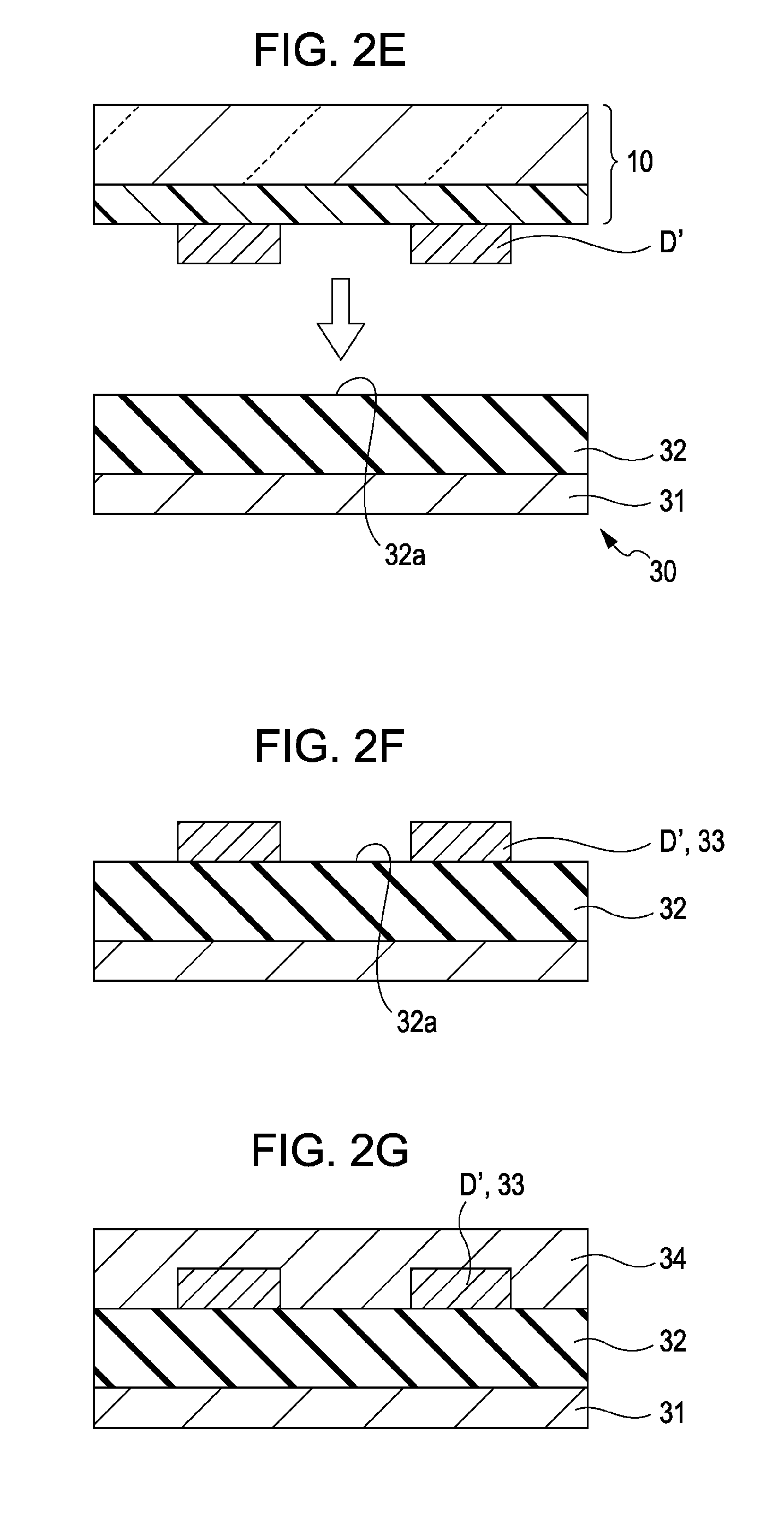Method for forming pattern, method for manufacturing semiconductor device and semiconductor device
a semiconductor device and pattern technology, applied in the direction of printing press parts, instruments, photomechanical equipment, etc., can solve the problems of difficult uniform application of resin over the entire surface of a first plate, increase in resin viscosity, and difficulty in forming electrically conductive thin films, etc., to achieve high accuracy, reduce viscosity of liquid composition, and high dispersibility
- Summary
- Abstract
- Description
- Claims
- Application Information
AI Technical Summary
Benefits of technology
Problems solved by technology
Method used
Image
Examples
example 1
[0050]Similar to the above-mentioned embodiment, a first plate 10 (blanket) was formed on a glass substrate 11 by applying PDMS (Dow Corning Corporation, Silpot) using a spin coater and curing the PDMS by heating. Then, a liquid composition containing cyclohexane and silver nanoparticles dispersed in the cyclohexane to be 5 wt % was prepared, the surfaces of the silver nanoparticles (an average diameter of 10 nm) being treated with oleic acid. Next, an electrically conductive film D was formed on the first plate 10 by applying the liquid composition thereonto using a spin coater.
[0051]On the other hand, a second plate 20 composed of a glass plate was formed by applying a photoresist (KAYAKU MICROCHEM CO., LTD., SU-8) onto a glass substrate to form a photoresist film having a thickness of 5 μm using a spin-coater, and exposing and developing the photoresist film resulting in formation of a concave-convex pattern having a line-and-space (L / S) of 5 μm (aspect ratio 1:1) on a surface of...
PUM
| Property | Measurement | Unit |
|---|---|---|
| thickness | aaaaa | aaaaa |
| thickness | aaaaa | aaaaa |
| diameter | aaaaa | aaaaa |
Abstract
Description
Claims
Application Information
 Login to View More
Login to View More - R&D
- Intellectual Property
- Life Sciences
- Materials
- Tech Scout
- Unparalleled Data Quality
- Higher Quality Content
- 60% Fewer Hallucinations
Browse by: Latest US Patents, China's latest patents, Technical Efficacy Thesaurus, Application Domain, Technology Topic, Popular Technical Reports.
© 2025 PatSnap. All rights reserved.Legal|Privacy policy|Modern Slavery Act Transparency Statement|Sitemap|About US| Contact US: help@patsnap.com



